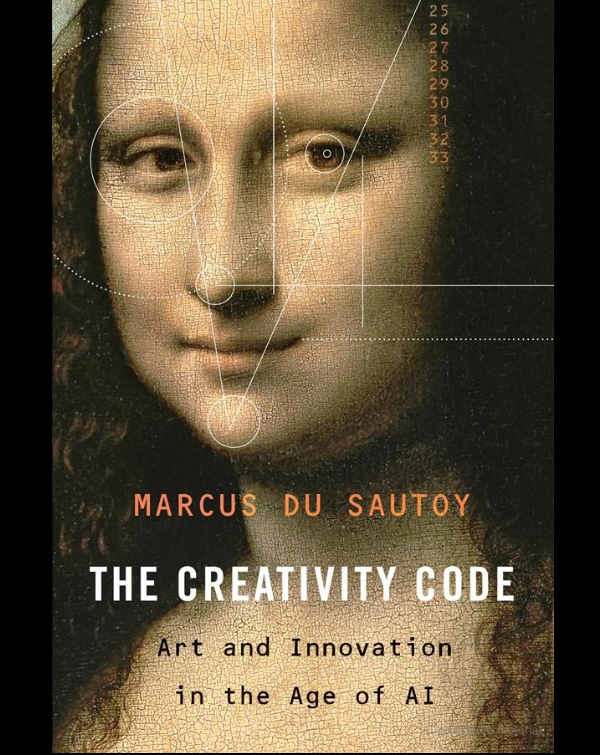Book Review: The Creativity Code by Marcus du Sautoy - Unraveling the Intersection of Art and Innovation in the Age of AI
- Franco Arteseros
- Jan 13
- 4 min read
In today's rapidly evolving world of artificial intelligence, a fascinating question arises: Can machines truly create? Marcus du Sautoy tackles this issue head-on in "The Creativity Code." The book explores the relationship between creativity and technology, urging readers to rethink what it means to innovate in a landscape increasingly shaped by machines. The subtitle, "Art and Innovation in the Age of AI," hints at the significant themes that Sautoy unpacks throughout the text.
Chapter 1: The Enigma of Creativity
Sautoy opens with an exploration of creativity, asking the fundamental question: "What is creativity?" He challenges traditional views that restrict creativity to humans alone. For instance, he references the way algorithms can generate poetry and music, suggesting that creativity may be more about pattern recognition than pure human intuition. This chapter lays the groundwork for deeper discussions, prompting us to view artificial intelligence as a potential contributor to creative endeavors.

Du Sautoy asserts that creativity can be quantified mathematically. For example, he discusses the use of fractals in art and the Fibonacci sequence in nature, highlighting how mathematical principles underpin aesthetic appeal. This perspective opens the door to new possibilities in understanding both human and machine creativity.
Chapter 2: The Machines on the Scene
The second chapter introduces various AI programs that have ventured into creative fields. For example, OpenAI's DALL-E can create stunning visual art from text prompts, while Google's MuseNet composes music across different genres. Sautoy emphasizes how these tools have transformed artistic production, but he also raises an essential question: Are they genuinely creating, or merely mimicking human expression?

He provides examples of AI-generated art that can pass as human-made, yet the algorithmic processes lack emotional connections and intentions behind the pieces. This brings us to consider the intricacies of genuine human creativity.
Chapter 3: The Creative Process
In this chapter, Sautoy contrasts human creators with machine-based systems. He emphasizes that human creativity is influenced by personal experiences, emotions, and instincts. For instance, a painter might draw upon her childhood memories to create a piece that resonates on an emotional level.
In contrast, AI relies on vast datasets and statistical patterns to generate art. However, Sautoy suggests that these differences do not have to be adversarial; instead, AI can serve as a valuable collaborator that sparks new creative ideas. Artists like Refik Anadol incorporate AI in data-driven installations, expanding the scope of what art can be.
Chapter 4: What Makes Art, Art?
Sautoy digs into the complexities surrounding the definition of art. He examines critical factors like intention, uniqueness, and impact. As AI-generated art gains popularity, conventional definitions are challenged. For example, when an AI creates a work that evokes an emotional response, does it hold the same value as a human-made piece?
The chapter provokes thought on the essence of art in a digital era, prompting readers to broaden their understanding. As technology evolves, we may need to rethink longstanding beliefs about what constitutes genuine artistry.
Chapter 5: The Collaborators
Focusing on partnerships between artists and machines, this section shines a light on innovative collaborative projects. Sautoy shares the stories of contemporary artists, such as Anna Ridler, who uses coding to generate visuals that blend human input with AI capabilities.
This collaboration opens up artistic avenues previously unimagined. By blending intuition and technical precision, these artists create works that challenge the notion of who is the true 'creator.' For instance, the combination of human oversight and AI-generated design in fashion showcases how both can coalesce to produce unique wearable art.

Chapter 6: The Future of Creativity
In the final chapter, Sautoy contemplates the future of creativity amidst rising AI influence. He raises critical concerns about relying heavily on technology in creative fields. While there are fears about devaluing human creativity, Sautoy emphasizes the opportunities AI presents for new forms of expression.
Statistics suggest that 87% of artists already use technology in their creative processes, illustrating a shift in collaborative potential. Rather than viewing AI as a threat, Sautoy encourages embracing it as a tool that enhances the creative landscape. He shares stories of artists who have successfully integrated AI into their work to illustrate this point.
Discovering New Creative Horizons
"The Creativity Code" by Marcus du Sautoy offers a profound exploration of how creativity intersects with artificial intelligence. Through a blend of theory and practicality, Sautoy encourages readers to reconsider their understanding of creativity.
He skillfully intertwines philosophy, art, and technology, nurturing a deeper appreciation for both human and machine creativity. Instead of viewing AI as a rival, he invites us to see it as a partner in the pursuit of artistic innovation.
Ultimately, the book raises essential questions about the nature of creativity and how we might transform our artistic expressions in a future where technology plays an integral role. As we navigate these evolving landscapes, the potential for creativity to flourish alongside AI becomes ever more exciting. The line between human and machine-generated art blurs, revealing a world limited only by our imagination.









Comments